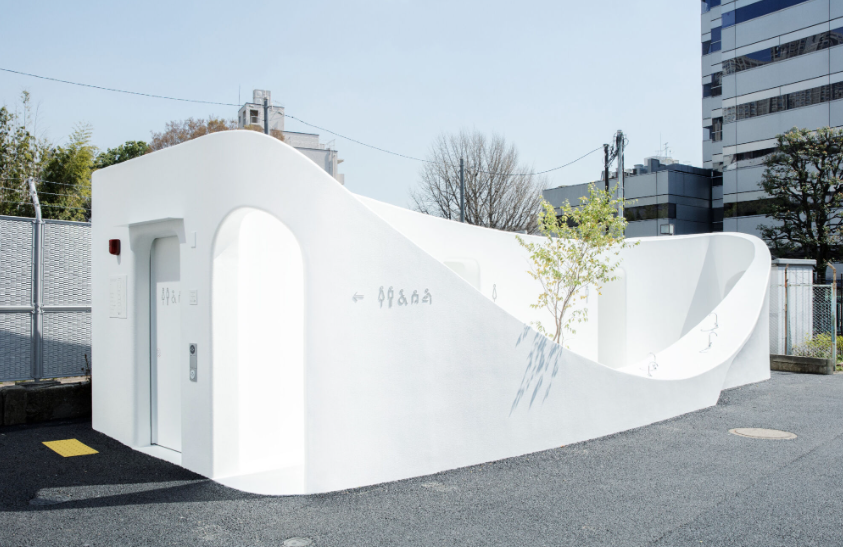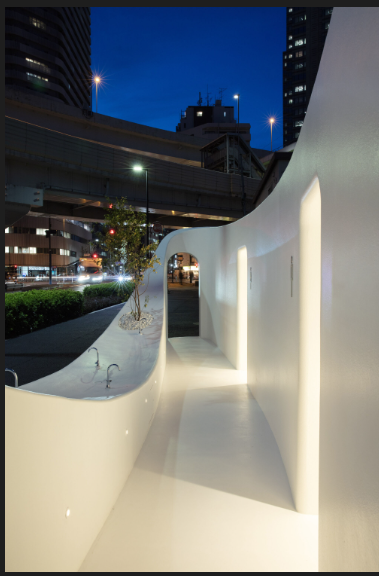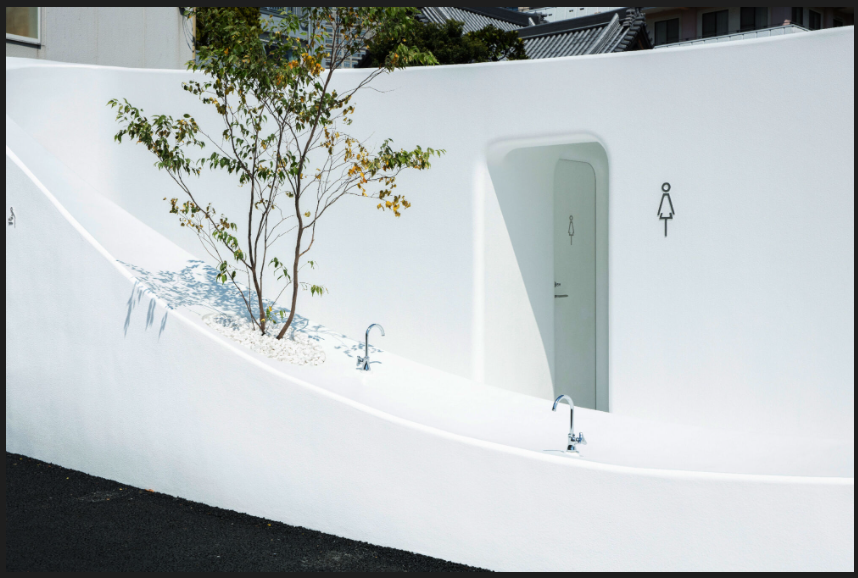By : Vivia Alysia Yang | ArchUPH 2021

Architecture as a movement is one of the goals of The Tokyo Toilet. The project aims to omit the stigma that most public toilets are dirty, dark, smelly, not inclusive of people with disabilities, and difficult to find. The Tokyo Toilet wants to create public toilets that are clean, easy to access, and very friendly for users of various categories. With The Tokyo Toilet, they hope that the healthy lifestyle of the Japanese people will improve. Through the design of The Tokyo Toilet, the designers want to reunite humans with nature through their choice of materials and restore Japanese cultural traditions that have almost faded as well. The design of a building is not only about its aesthetic appearance but also its functionality and how it affects the user. One important aspect of building design is form, which refers to size, shape, and proportion. The form of a building can have a significant impact on users and their experience of the space.
One of the most significant effects of a building’s form on its users is its aesthetic appeal. Aesthetically designed buildings can give an attractive impression to those who see them. Visually appealing buildings can lift the mood of their users, create a sense of awe, and even inspire creativity. Research has proven that people tend to have a more positive emotional response to buildings with certain shapes and proportions. A study conducted at the University of Groningen found that people generally prefer buildings with curved and organic shapes to those with straight lines and corners. Another study from the University of California, Berkeley found that people have a more positive emotional response to buildings with proportions that follow the golden ratio, a mathematical formula believed to produce pleasing proportions.
Building form can also influence user behavior. Buildings with complex shapes can be challenging to navigate, while buildings with simpler shapes can be easily navigated. The layout of a building can also influence the movement of users within it. For example, a long, narrow hallway can create a feeling of confinement, while an open space can create a feeling of freedom and space.
A study published in the journal Building and Environment found that the shape and layout of a building can significantly influence user satisfaction. The study found that buildings with simple, intuitive layouts were more positively accepted by users than buildings with complex layouts that required more effort to navigate.

Looking at the results of The Tokyo Toilet Project designed by Sou Fujimoto with its very simple and organic shape, it can be said that Sou Fujimoto succeeded in creating a toilet that is visually unique, and more importantly, easy to navigate by everyone universally. Starting from children, to elderly, to people with disabilities can access this toilet easily. This can be seen from the very flexible design of the hand washing area, with walls that curve to adjust to the height of the user. This toilet hallway is very open and the access point is also wide enough so that people passing through this hallway will not bump into each other and still feel relieved.

Sou Fujimoto’s simple and unobtrusive design makes this toilet blend with the surrounding urban environment. Choosing the right colors and materials also creates an impression of harmony and balance with the environment. The open space in this toilet creates natural ventilation so it will have a positive impact on its users.
The shape of a building can also affect the health and well-being of its users. Buildings with sufficient natural light and ventilation can promote better health and productivity for their users. Buildings with complex shapes and narrow hallways can create a feeling of claustrophobia and feelings of anxiety which can lead to stress and psychological problems.
A study conducted by the University of Surrey found that exposure to natural light in buildings can have a significant impact on mental health and well-being. The study found that buildings with higher exposure to natural light were associated with lower levels of depression and higher levels of well-being among their residents. Another study from the University of California, Irvine found that lack of exposure to natural light indoors was associated with sleep disturbances and decreased productivity.
Sou Fujimoto’s toilet design gets several comments coming from netizens. The following comment was obtained from the YouTube room tour video which said that choosing an open roof for this toilet design is not the right thing to do because it would be troublesome in extreme weather, such as heavy rain and winter. They also questioned the existence of hand washing soap, dry tissue, and hand drying machines.

